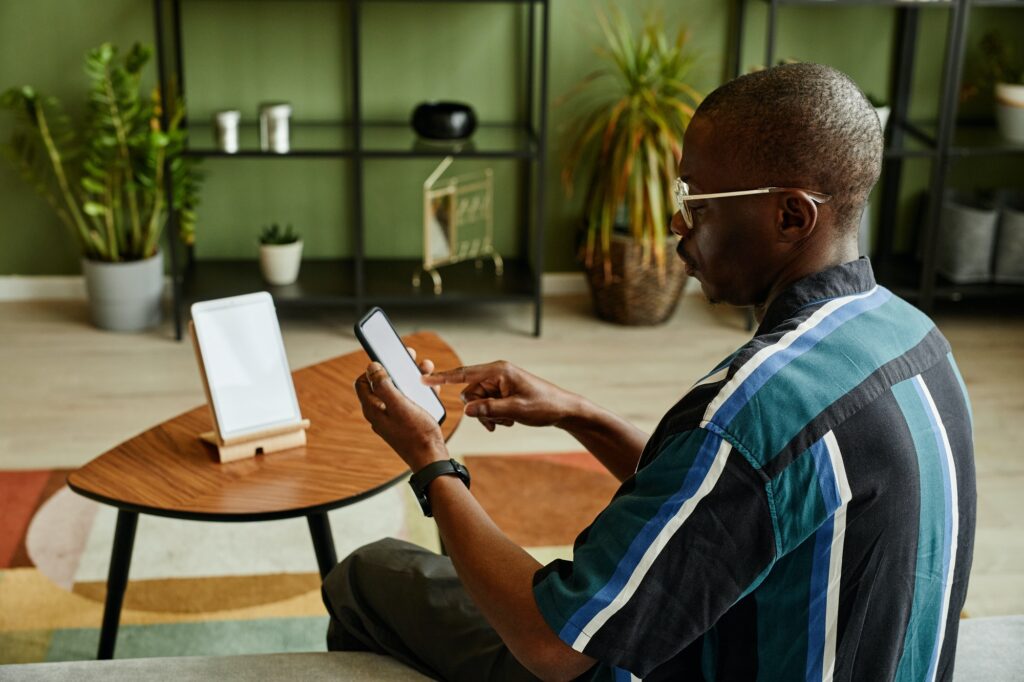As the world embraces technological advancements, the intersection of smart technology and the needs of our aging population has given rise to a transformative concept—Elderly-Friendly Home Automation. This comprehensive guide embarks on a journey through the realm of assistive technologies and smart devices meticulously crafted to support aging in place while ensuring the safety and well-being of our senior citizens. From intuitive interfaces to personalized solutions, we will explore how these advancements empower the elderly to maintain independence, simplify daily tasks, and enjoy an enhanced quality of life in their homes’ familiar comfort.
Introduction to Home Automation Security for Elderly Residents

Home automation security for elderly residents is a crucial facet of leveraging technological advancements to enhance their well-being and independence. Tailored to address the unique needs of seniors, these systems integrate smart devices and assistive technologies, ranging from user-friendly interfaces to personalized solutions. The emphasis is on creating a secure living environment by implementing robust authentication, encryption protocols, and regular software updates. From senior-friendly security systems with intuitive interfaces to emergency response features and remote monitoring capabilities, these advancements not only safeguard against potential risks but also contribute to a sense of confidence and autonomy for elderly residents, allowing them to age in place with peace of mind.
Key Features of Elderly-friendly Home Automation Systems
Elderly-friendly home automation systems encompass a range of features designed to address the unique needs and challenges faced by seniors. These key features contribute to a secure, comfortable, and accessible living environment:
1. User-Friendly Interfaces:
Intuitive and easy-to-use interfaces, whether on smart devices or centralized control panels, ensure that elderly residents can effortlessly navigate and manage their home automation systems.
2. Voice Control and Assistants:
Integration with voice-activated assistants, such as Amazon Alexa or Google Assistant, allows seniors to control various devices using verbal commands. This hands-free approach simplifies interaction and reduces the need for manual controls.
3. Motion Sensors and Automated Lighting:
Motion sensors paired with automated lighting systems enhance safety by illuminating pathways as seniors move around their homes. This feature eliminates the need to manually operate light switches, reducing the risk of falls.
4. Emergency Response Integration:
Integration with medical alert systems and panic buttons enables quick and efficient emergency response. This feature ensures that help can be summoned promptly in the event of a fall or health emergency.
5. Remote Monitoring and Alerts:
Caregivers or family members can remotely monitor the well-being of elderly residents through sensors and cameras. Automated alerts provide real-time notifications about unusual activities or changes in daily routines.
6. Customizable Settings:
Home automation systems that offer customizable settings allow seniors to tailor their environment to their specific needs. Personalization features include adjustable lighting levels, temperature controls, and other preferences.
Top Home Automation Security Devices for Elderly Residents
Several devices cater specifically to the security needs of elderly residents within a home automation setup.
1. Smart Security Cameras:
Smart security cameras with features like motion detection, two-way communication, and high-resolution video provide real-time monitoring, allowing seniors to keep an eye on their surroundings. These cameras can be integrated into comprehensive home security systems.
2. Smart Doorbell Cameras:
Doorbell cameras equipped with motion sensors and live video streaming enable seniors to see and communicate with visitors remotely. This enhances security by allowing for identification and communication without opening the door.
3. Smart Locks:
Smart locks offer keyless entry, allowing seniors to control access to their homes digitally. With features like remote locking and unlocking, these devices enhance security by providing convenient and secure entry management.
4. Medical Alert Systems:
Integrated with home automation, medical alert systems can automatically notify emergency services or caregivers in case of a fall or a health emergency. These devices contribute significantly to the overall safety of elderly residents.
5. Smart Lighting Systems and Temperature Control
Automated lighting systems with motion sensors not only enhance convenience but also contribute to security. Well-lit spaces can deter potential intruders, and automated lighting can be programmed to create the illusion of occupancy when the residents are away. Similarly, temperature control systems ensure a comfortable environment without manual adjustments.
6. Smart Sensors:
Sensors that detect unusual activity or changes in routine can be integrated into home automation systems. These sensors provide an additional layer of security by alerting caregivers or family members to any anomalies in the daily patterns of elderly residents.
7. Panic Buttons and Wearables:
Wearable devices equipped with panic buttons or emergency alert features offer seniors a quick and accessible way to call for help in case of emergencies. These devices can be connected to the home automation system for seamless integration.
Also Read: Empowering Security: The Magic of Smart Home Motion Sensor Alarms
8. Smart Thermostats and Smoke Detectors:
Smart thermostats and smoke detectors not only contribute to energy efficiency and fire safety but can also be monitored remotely. Alerts and notifications ensure that seniors are aware of any potential issues, providing peace of mind.
9. Voice-Activated Assistants:
Voice-activated assistants like Amazon Alexa or Google Assistant can be integrated into the home automation setup. They enable hands-free control of various devices, allowing seniors to manage their environment easily and call for assistance using voice commands.
10. Video Intercom Systems:
Video intercom systems enhance security by allowing visual verification of visitors before granting access. Seniors can communicate with visitors through a secure video link, providing an extra layer of safety.
When considering home automation devices for senior security, it’s essential to choose products that are user-friendly, reliable, and seamlessly integrated into the daily lives of elderly residents, promoting both safety and independence.
Benefits of Home Automation for Elderly Residents
Home automation offers numerous benefits for elderly residents, enhancing their quality of life and fostering independence in various aspects of daily living:
1. Increased Safety and Security:
Smart security systems, including cameras, sensors, and automated door locks, provide heightened security by monitoring the home and alerting residents or caregivers to potential risks. This is especially crucial for elderly individuals living alone.
2. Assistance with Daily Tasks:
Automated devices can assist with routine tasks, such as smart thermostats regulating the home’s temperature, smart lighting systems adjusting illumination levels, and voice-activated assistants providing hands-free control. This reduces physical strain and enhances overall comfort.
3. Emergency Response and Medical Monitoring:
Integration with medical alert systems and wearable devices enables swift response in case of emergencies. Automated alerts can notify caregivers or emergency services in the event of a fall or health issue, ensuring prompt assistance.
4. Remote Monitoring and Caregiver Support:
Home automation allows family members or caregivers to remotely monitor the well-being of elderly residents. Through connected devices and sensors, caregivers can receive updates on daily activities and respond quickly to changing needs.
5. Enhanced Independence:
Smart devices empower elderly residents to maintain autonomy in their homes. From automated door systems to voice-activated controls, these technologies enable seniors to manage their environment independently, promoting a sense of self-sufficiency.
6. Medication Management:
Automated medication dispensers and reminders help seniors adhere to their medication schedules. This feature is crucial for managing chronic conditions and promoting overall health.
7. Energy Efficiency and Cost Savings:
Smart home systems contribute to energy efficiency by optimizing heating, cooling, and lighting based on usage patterns. This not only reduces utility costs but also minimizes environmental impact.
8. Social Connectivity:
Video calling features on smart devices facilitate easy communication with friends and family members, reducing feelings of isolation. Social connectivity is crucial for mental well-being, and home automation helps bridge the gap for elderly individuals.
9. Customization for Specific Needs:
Home automation systems can be tailored to address the specific needs and preferences of elderly residents. Customizable settings for lighting, temperature, and security features allow for personalized solutions that cater to individual requirements.
10. Peace of Mind for Family Members:
For family members and caregivers, home automation provides peace of mind by offering real-time insights into the well-being of elderly residents. The ability to remotely monitor and respond to alerts ensures that assistance can be provided promptly.
In essence, home automation serves as a supportive and empowering tool for elderly residents, promoting safety, independence, and an improved overall quality of life. As technology continues to advance, the potential benefits for seniors are likely to expand, offering innovative solutions to address their evolving needs.
Considerations When Implementing Home Automation for Elderly Residents
Customization and user-friendly interfaces are essential factors to consider when implementing home automation for seniors. Tailoring these systems according to individual needs and ensuring ease of use is imperative.
1. Customization According to Needs:
Each senior has unique requirements, so customization is vital. For instance, some may need automated medication reminders, while others might benefit from automated lighting schedules that sync with their routines.
2. User-Friendly Interfaces:
The interface of these systems should be intuitive and easy to navigate. Large buttons, voice commands, or simplified apps contribute significantly to their usability for seniors.
3. Integration with Existing Infrastructure:
Compatibility with existing devices or infrastructure in the home is crucial. Seamless integration ensures a hassle-free experience and encourages seniors to adapt to these technologies more readily.
In conclusion, the integration of home automation for seniors represents a transformative stride towards fostering independence, safety, and a higher quality of life within the aging population. As technology continues to advance, thoughtful considerations—ranging from user-friendly interfaces and customization options to robust privacy measures—become paramount in ensuring that these systems truly meet the unique needs of seniors. By embracing the key features and considerations outlined in this guide, we pave the way for smart homes that not only enhance accessibility and security but also contribute to the overall well-being and autonomy of our elderly residents. As we navigate the intersection of technology and compassion, the vision of creating elderly-friendly home automation systems becomes not just a reality but a beacon of empowerment for our seniors, allowing them to age in place with dignity, comfort, and the support they deserve.
